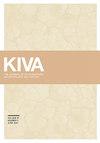了解我们正在变暖的世界过去与气候有关的移民
IF 0.4
0 ARCHAEOLOGY
Kiva-Journal of Southwestern Anthropology and History
Pub Date : 2021-02-04
DOI:10.1080/00231940.2021.1880170
引用次数: 0
摘要
随着人为气候变暖和相关极端气候的增加,应该分享美国西南部一个世纪以来为了解气候相关移民所做的努力的见解,以帮助现代干旱规划工作。为此,我们作出了两项平行的贡献。首先,我们在公元1100年代的Mimbres地区和公元1200-1450年代的亚利桑那州中部地区的工作中做出了一个令人惊讶的发现。我们发现,在这片干旱的土地上,能获得最多水的人在面临干旱条件时也最有可能迁移。其次,我们用这些结果来证明过去如何有助于现代干旱规划者和其他为气候变暖做准备的人。今天,数以百万计的小农户实行与过去类似的农业战略。我们的目标是刺激考古工作,以应对世界变暖的挑战。本文章由计算机程序翻译,如有差异,请以英文原文为准。
Understanding Past Climate-Related Migration for Our Warming World
As anthropogenic climate warming and associated climate extremes increase, insights from a century of effort in the US Southwest to understand climate-related migration should be shared to assist with modern drought planning efforts. Toward this end, we make two parallel contributions. First, we contribute a surprising finding from our work in the Mimbres area of the AD 1100s and the central Arizona area during the AD 1200–1450 period. We find people with access to the most water in this arid landscape were also the most likely to migrate when confronted with dry conditions. Second, we use these results to demonstrate how the past can be helpful to modern drought planners and others preparing for a warming climate. Millions of smallholder farmers today practice agricultural strategies similar to those in the past. We aim to stimulate archaeological efforts to address the challenges of a warming world.
求助全文
通过发布文献求助,成功后即可免费获取论文全文。
去求助
来源期刊
CiteScore
0.70
自引率
33.30%
发文量
31

 求助内容:
求助内容: 应助结果提醒方式:
应助结果提醒方式:


